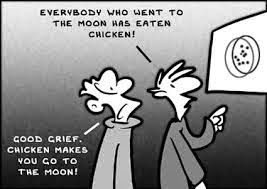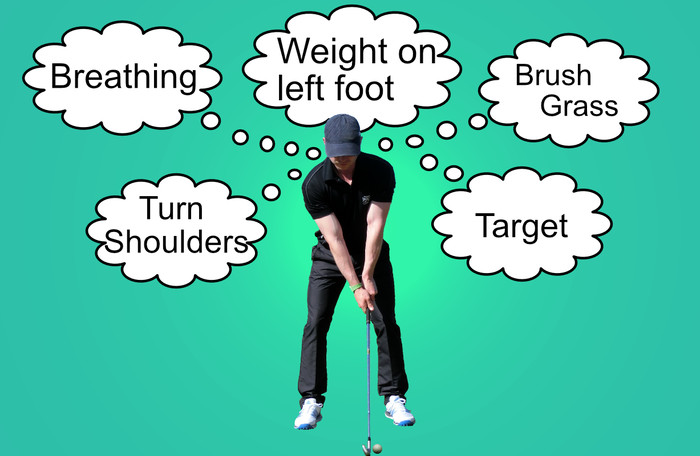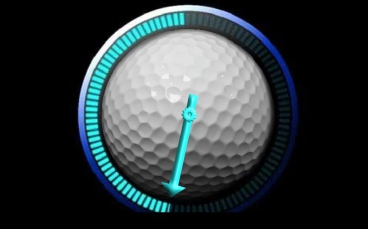A study into the performance of elite golfers was recently completed (27th November 2017). The findings are incredible, and I think that players and coaches around the world can learn a lot from the results.
In this article, I will
- Explore/summarize the study results
- Share some real-world examples of the study in action
- Offer my opinion on how to use the results to improve your own performance/player’s performance
At the end of the post, I will link to the website where you can find out more information and see the stats for yourself.
The Study
I studied my BA honors degree in Birmingham University (UK). Interestingly, the lead author of this study was the very man who marked my dissertation (Dr Matt Bridge) – so it makes it interesting that the roles are reversed on this one.
While I don’t have the same academic background, I like to think I can offer some unique insights based on my 13K+ hours of teaching the sport and implementing interventions relating to the study.
The study followed 47 European Tour pros over 304 rounds, totaling almost 23,000 shots.
It looked at the pre-shot routines of a player – meaning the processes they go through (practice swings, time spent etc) before a shot is taken.
The main points studied looked at;
- The amount of time players spent between addressing the ball and hitting the shot
- The consistency with which a player stuck to this “time between shots”
- The components of the routine (such as how many practice swings/looks towards the target etc)
The Results
The results couldn’t have been more clear. They showed a massive advantage to taking less time over shots, as well as improvements in performance when the routine was more consistent.
To give you some numbers, less time spent over the ball resulted in;
- Doubling your chance of holing a putt when within 5 foot
- 90% increased chance of gaining strokes over the field over all putts
- 20% more green hit on par 5’s
- 12% improvement in tee shots
- A calculated projected increase in 189,000 Euros per season
Also, to boot, when players maintained consistency with their routines (timing and components), they showed a much greater likelihood of making the cut (50% greater if there was more consistency between round 1 and 2).
That’s huge. “potentially” making or breaking a tour player’s career simply based on their routine.
Some Examples
Consistency of routine is something I have, and will continue to teach. I think there are several upsides to it, including;
- Helping your body and mind get to a more “automatic” or less-conscious state
- Helping to calm you, and to give a racing mind something to focus on during times of stress
- Reducing the amount of thought going on – specifically thoughts about “how” to perform an action, rather than just trusting it
- Thus, reducing errors created by cognitive interference/overload I.E. paralysis by analysis, or thinking too much (more time over the ball has been shown to increase thoughts of the swing. This could lead to detriments in performance when movement is automatic)
- Occupying the conscious mind with a task – allowing the subconscious to take care of the movement.
I have been teaching certain principles in the routine for years now. I used to notice how the best players had such consistent routines – such as this video of Tiger Woods in his unbelievable 15-shot victory at Pebble beach US Open.
The first shot was the opening tee shot – one of the most stressful events you could imagine. The second shot, I believe, was at a mid-way point in the round.
Now, I understand a lot of you could say that I cherry picked those routines, but listen to this 1 minute clip of Tiger discussing routines.
Also, watch Rory McIlroy in this tournament – I noticed a distinct pattern in his routine.
While his routine was not exact (regarding timing), the components of the routine (waggles and looks etc) were identical. Rory won this tournament.
I know from personal experience, adjusting my routine and making everything more consistent helped me drastically. I have also seen the same in many of my players.
Not So Fast
Let’s, for one moment, put our critical thinking caps on.
While everyone and their dog are now rushing to the range to make a 2 second routine (consistent to the nearest millisecond), let me add this first.
 The study looked at correlation, not causation – meaning the incidence of quicker and more consistent routines happened to coincide with, but not necessarily cause, better performance.
The study looked at correlation, not causation – meaning the incidence of quicker and more consistent routines happened to coincide with, but not necessarily cause, better performance.
What’s the difference, I hear you say. Well, let me give you an example to highlight it.
We can say with relative certainty, that everyone who has been to the moon has also eaten chicken. However, just because going to the moon and having eaten chicken correlate strongly, this doesn’t mean that eating chicken will make you go to the moon.
Likewise, just because golfers who spent less time and made more consistent routines ALSO performed better, it doesn’t necessarily mean that making a quicker and more consistent routine will make you play better.
In fact, it might make you worse.
Teaching Reality
I have noticed patterns where;
- Analytical golfers who suffer with paralysis by analysis
- Advanced golfers with honed and autonomous skill-sets
- Players who tend to perform poorly under pressure
see an improvement in performance when they take more of a “routine” focus.
However, in my teaching experience, not every golfer benefits from a quicker or more consistent routine. For many players, focusing on their routines can cause detriments to their performance.
 This could be because the “routine focus” can be an added thought, contributing to cognitive overload. For some players, focusing on routine may make all other thoughts melt away – but some personalities will just “add” the routine thoughts to their existing checklist. And, just as too many cooks spoil the broth, too many swing thoughts can spoil your game.
This could be because the “routine focus” can be an added thought, contributing to cognitive overload. For some players, focusing on routine may make all other thoughts melt away – but some personalities will just “add” the routine thoughts to their existing checklist. And, just as too many cooks spoil the broth, too many swing thoughts can spoil your game.
Also, thinking about ones routine may disrupt a player’s attention from other processes which may be vital to that player during their specific stage of development. It’s fine to say that elite gofers saw an increase in performance, but they have certain skills (strike quality, swing mechanics) already ingrained. A player who is early on in their development may require more attention on those specific processes – and thinking about their routines can distract them from this.
From a player’s perspective, certain shots also require more focus and attention to detail, which might require more time. For example, difficult shots (such as curving the ball around a tree, or hitting a chip shot where the landing zone is crucial) usually require a bit more thought, as there are more parameters which need to be in place to make the outcome successful.
In fact, this could be one of the reasons why quicker, more consistent routines correlated with better shots – perhaps those shots were just easier and required less thought.
Similarly, when a player is playing poorly, they may actually require more thought. For example (one which the amateur can relate to), if a player was suffering with the shanks one day, just “zoning out” with a well-timed routine might just make the shank more consistent. Not good!
In the above example, jumping into the “conscious driving seat”, and removing the auto-pilot, might be what they need to stop the rot.
Other Thoughts
While some players (like Tiger) may be quite aware of their routines during play, for many, their routine is just an autonomous part of their play. In this regard, it could be that their routines BECOME more consistent and less time-involved when a player is playing well – but this is happening without the player’s awareness. To bring the awareness of the player to this fact could actually knock them out of this state.
It’s highly likely that, when a player is playing well, they
- feel more comfortable and in control
- require less thought, as good stuff is happening on auto pilot
- experience shots which require less mental attention (it’s much easier if you are playing a stock shot from the middle of the fairway than if you have to hook one around a tree from a tight lie).
In this regard, the improved performance is bringing rise to the more consistent routine, not the other way around – a reverse correlation.
 All in all, in order to truly test the conclusions of this study, an intervention study would need to be made where players are asked to focus on their routines and attempt to make them more consistent and shorter.
All in all, in order to truly test the conclusions of this study, an intervention study would need to be made where players are asked to focus on their routines and attempt to make them more consistent and shorter.
A pre-test followed by a post test (with a control group) could get to the bottom of whether the extrapolations from the data are valid.
Already Been Done
While much less formal, I have already tested this. In my thousands of hours of teaching, I have explored various routines with players of all levels.
 What I have found is that it is highly individualized. Some players perform better with less thinking and a more “routine focus”, and others perform worse.
What I have found is that it is highly individualized. Some players perform better with less thinking and a more “routine focus”, and others perform worse.
Each player has their own unique mix of traits, and a routine focus will fit in with some player’s traits, but it can interfere with others.
Unfortunately, it’s not as easy to say X correlates with improved performance, therefore all players should do X. That’s like saying “all experienced stick shift car drivers don’t think about what their feet are doing while driving”. That’s fine for those drivers who have developed the skill of depressing the clutch and changing gears to the automatic level – but a new-driver may have to have more attention placed on what their feet are doing.
Everyone is different and will need different things.
How To Use The Results
Yet, despite all this I still teach routine to players.
To me, the routine is a tool.
- If you are playing well, it can help to continue that form.
- If you are playing poorly because of cognitive overload (too many swing thoughts), then it can help with that. But if you are pretty comfortable, feeling automatic and playing poorly, you may need to jump in the drivers seat and actually think about/change what you are doing by adding a different tool. In that scenario, poor play and a less consistent routines may-well correlate with poor performance, but the inconsistent and differently timed routine may actually be helping you.
- As a training tool to help you learn how to trust your swing and let it go on autopilot, it’s great.
For me, understanding when and why to use a “routine focus” is important.
In fact, I get a lot of my players to test varying routines with varying types of foci. In many cases, we see dramatic changes in a player’s performance. Below is an example of an analytical player who didn’t trust their swing. We used a counting routine focus and saw (verified by Trackman) an incredible improvement to his dispersion.
Sometimes a focus on the routine and its consistency works a treat. Other times, a player needs to build up a level of comfort with a more technical thought (internal or external).
I describe more about how to go through this testing to find your own personal performance plan in The Practice Manual – The Ultimate Guide for Golfers (click the image below for more info).
Cliff notes
- A recent study found that players with shorter and more consistent routines had much better performances
- Anecdotal evidence from players and teachers supports this viewpoint
- It’s important to note that there is a big difference between saying something correlates with improved performance and something causes improved performance.
- The reality is, it could work in reverse. You could add a trait that all great players (or in-form players) possess and see a decline in performance, if it doesn’t fit in with the unique mix of traits of that player at that time.
- Focusing on the routine is (in my book) classed as a neutral focus. It is a tool, and a great one for certain players. But it is important to know when to use it, and when to use another tool.

